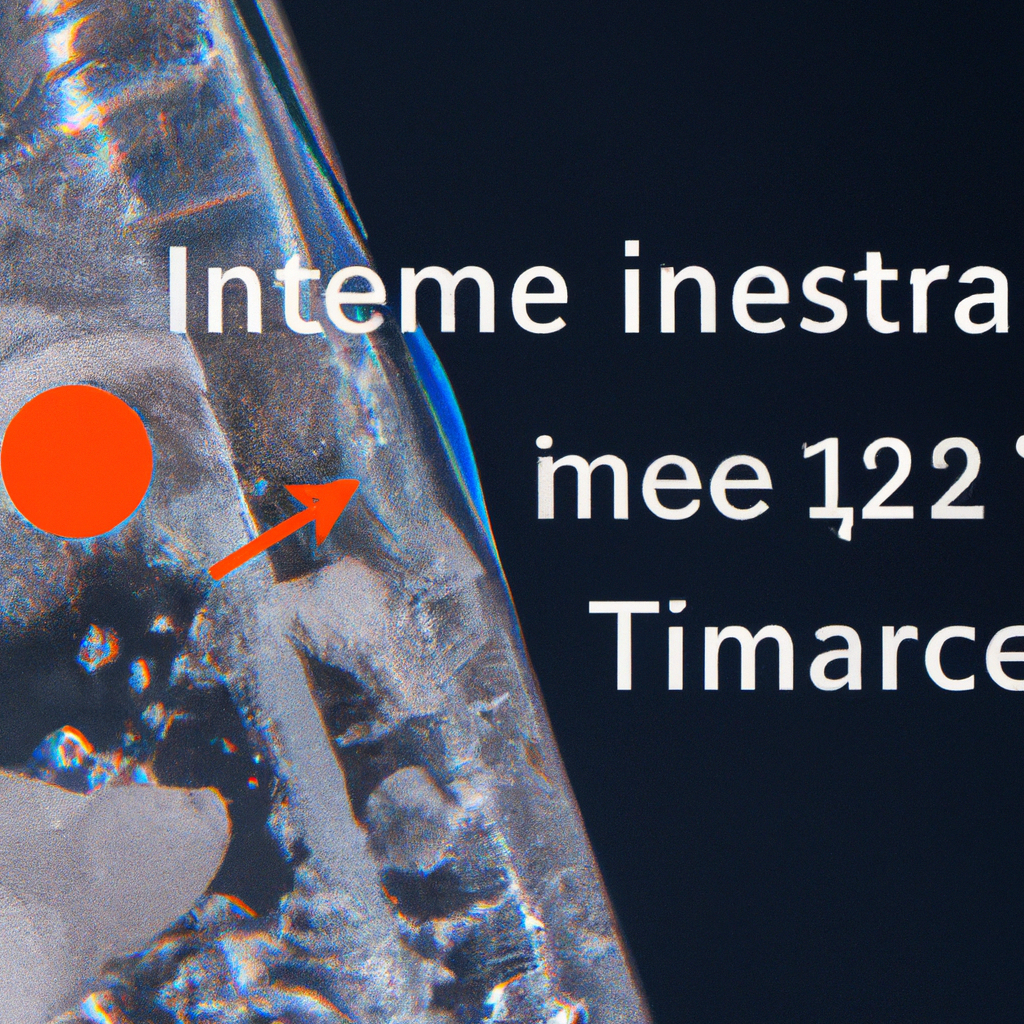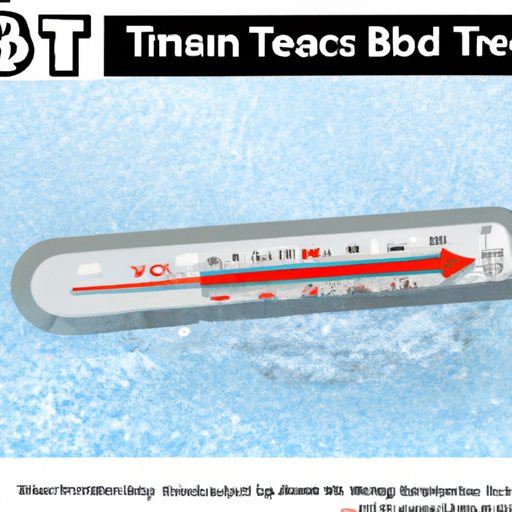So you’ve heard about the incredible benefits of ice baths and you’re ready to take the plunge? Well, get ready to achieve your desired results by nailing the perfect ice bath temperature. Finding the sweet spot between too cold and not cold enough is crucial for reaping the maximum benefits for your body. In this article, we’ll guide you through the science behind ice baths and how to set the optimal temperature for your own refreshing and rejuvenating experience. Get ready to embrace the cold and unlock a world of benefits for your physical and mental well-being.

This image is property of images.pexels.com.
Importance of Ice Baths for Recovery
Ice baths, also known as cold water immersion, have gained popularity in the realm of sports and fitness for their ability to aid in recovery. While it may seem intimidating to submerge yourself in ice-cold water, the benefits of ice baths cannot be ignored. From reducing inflammation to promoting muscle recovery, ice baths have proven to be an effective tool in enhancing the recovery process.
Benefits of Ice Baths
Ice baths offer a multitude of benefits for athletes and individuals seeking optimal recovery. Firstly, they help to reduce inflammation by constricting blood vessels and decreasing blood flow to the affected areas. This reduction in blood flow can alleviate swelling and pain, helping you recover faster from strenuous physical activity.
Moreover, ice baths can enhance muscle recovery by decreasing the production of chemicals associated with muscle damage. The cold temperature of the water helps to reduce the breakdown of muscle tissue and increase the rate at which muscles repair themselves. This accelerates the healing process and improves overall muscle function.
Additionally, ice baths improve circulation and lymphatic drainage. Cold water immersion causes blood vessels to constrict, which increases blood flow when you warm up after getting out of the bath. This increased circulation facilitates the removal of metabolic waste products, such as lactic acid, from your muscles, reducing soreness and aiding in recovery.
How Ice Baths Aid in Recovery
Ice baths aid in recovery by creating a controlled physiological response in your body. When exposed to cold temperatures, your body reacts by constricting blood vessels and slowing down metabolic activity. This response helps to reduce inflammation and promote healing.
Furthermore, the cold temperature of the water numbs the nerve endings, providing temporary pain relief and reducing discomfort experienced after intense workouts or injuries. This numbing effect can also improve sleep quality, allowing your body to rest and recover more effectively.
Ice baths also have a psychological benefit. They can provide a sense of rejuvenation, making you feel invigorated and energized after a grueling workout or competition. The refreshing feeling of submerging yourself in cold water can help alleviate mental fatigue and promote a positive mindset for future training sessions.
Factors Influencing Ice Bath Effectiveness
The effectiveness of ice baths can vary based on several factors. Firstly, the type and duration of physical activity you engage in play a crucial role. Ice baths are particularly beneficial after intense exercise sessions or competitions that involve repetitive movements or high impact on the muscles.
Additionally, specific injuries or conditions may require different approaches to ice baths. While ice baths can generally aid in recovery, it is important to consult with a healthcare professional or sports therapist to determine the appropriate temperature and duration based on your injury or condition.
Furthermore, individual tolerance and comfort level must be considered. Some individuals may find it difficult to withstand extremely cold temperatures, while others may require a deeper chill to experience the desired benefits. It is important to listen to your body and adjust the temperature accordingly to ensure a safe and effective ice bath experience.
Understanding the Optimal Temperature
To make the most of your ice bath and ensure optimal benefits for recovery, understanding the optimal temperature range is essential.
Ideal Temperature Range
The ideal temperature range for ice baths typically falls between 50°F and 59°F (10°C and 15°C). This temperature range provides the right balance between effectiveness and tolerability. It is cold enough to induce the desired physiological response, but not so cold that it becomes unbearable or uncomfortable.
Effects of Different Temperatures
Different temperatures can have varying effects on the body during an ice bath. Warmer temperatures may not provide the same level of vasoconstriction and pain relief, limiting the effectiveness of the ice bath. Conversely, colder temperatures may cause excessive discomfort and potential harm if not properly monitored.
Determining Personal Preference
Determining the optimal temperature for your ice bath experience often requires some trial and error. Start with the recommended temperature range and adjust accordingly based on your personal preferences and sensations. Some individuals may find that a slightly colder temperature is more effective for them, while others may prefer a slightly warmer temperature. Pay attention to your body’s response to find the temperature that works best for you.

This image is property of images.pexels.com.
Scientific Research on Ice Bath Temperatures
Scientific research on ice bath temperatures provides valuable insights into the physiological response of the body and optimal temperature recommendations for effective recovery.
Studies on Cold Water Immersion
Numerous studies have been conducted to evaluate the effects of cold water immersion on recovery and performance. These studies have consistently shown that ice baths can reduce inflammation, decrease muscle soreness, and enhance recovery compared to passive rest or other forms of recovery interventions.
Temperature Recommendations by Experts
Experts in the field of sports science and rehabilitation have provided temperature recommendations for ice baths based on scientific evidence and practical experience. These recommendations often align with the ideal temperature range of 50°F to 59°F (10°C to 15°C) mentioned earlier.
Impact of Temperature on Physiological Response
Research has also explored the impact of temperature on the physiological response of the body during an ice bath. It has been observed that colder temperatures, within the recommended range, lead to greater vasoconstriction and subsequent reduction in inflammation. However, excessively cold temperatures can cause discomfort and potentially harm the body, highlighting the importance of finding the right balance.
Factors to Consider for Ice Bath Temperature
When determining the appropriate ice bath temperature for your recovery routine, several factors should be taken into consideration.
Type and Duration of Physical Activity
The type and duration of the physical activity you engage in can influence the temperature of your ice bath. Intense activities that place significant stress on the muscles may benefit from slightly colder temperatures to effectively reduce inflammation and promote recovery. Conversely, less strenuous activities may require slightly warmer temperatures to achieve the desired physiological response.
Specific Injury or Condition
If you have a specific injury or condition, it is important to consider the impact of ice bath temperature on its management. Certain injuries or conditions may require adjustments in temperature to optimize recovery without exacerbating symptoms. Consulting with a healthcare professional or sports therapist can provide valuable guidance in determining the appropriate temperature for your specific situation.
Individual Tolerance and Comfort
Individual tolerance and comfort level play a crucial role in choosing the right ice bath temperature. Some individuals may have a higher tolerance for cold temperatures and can benefit from slightly lower temperatures. Others may require slightly warmer temperatures to ensure a comfortable and effective experience. Experimenting with different temperatures and observing your body’s response can help find the temperature that works best for you.

This image is property of images.pexels.com.
Effect of Temperature on Inflammation Reduction
Reducing inflammation is one of the primary reasons athletes and individuals turn to ice baths. Understanding the relationship between temperature and inflammation can help maximize the benefits of cold water immersion.
Cold Temperature and Inflammation
Cold temperatures have been shown to effectively reduce inflammation by constricting blood vessels and slowing down the inflammatory response. This constriction limits the release of inflammatory mediators and decreases swelling and pain associated with inflammation.
Optimal Temperature for Inflammation Reduction
The optimal temperature for inflammation reduction during an ice bath falls within the recommended range of 50°F to 59°F (10°C to 15°C). Within this range, the body experiences vasoconstriction and reduced blood flow to the affected areas, resulting in a significant decrease in inflammation.
Duration of Ice Bath for Inflammation Management
The duration of an ice bath for inflammation management typically ranges from 10 to 15 minutes. This timeframe allows for the desired physiological response while preventing prolonged exposure to cold temperatures, which can lead to tissue damage.
Impact of Temperature on Muscle Recovery
Ice baths play a crucial role in promoting muscle recovery after intense workouts or competitions. The temperature of the ice bath can significantly impact the muscle healing process and overall recovery.
Muscle Healing Process
The muscle healing process involves the repair and regeneration of damaged muscle fibers. Ice baths aid in this process by reducing inflammation, minimizing the breakdown of muscle tissue, and promoting the growth of new, healthy muscle cells.
Temperature and Muscle Damage Repair
The temperature of the ice bath affects muscle damage repair by influencing blood flow and metabolic activity. Colder temperatures within the recommended range promote vasoconstriction, which reduces blood flow to the damaged muscles. This decrease in blood flow limits the release of chemicals that contribute to muscle damage, allowing for faster repair and recovery.
Best Temperature for Muscle Recovery
The best temperature for muscle recovery in an ice bath falls within the ideal range of 50°F to 59°F (10°C to 15°C). This temperature range provides the necessary physiological response to support muscle healing and recovery without causing excessive discomfort or potential harm.

Considerations for Heat Adaptation
While ice baths are primarily associated with cold therapy, it is important to consider the benefits of heat adaptation and the combination of heat and cold therapy.
Heat Acclimation Benefits
Heat acclimation, often achieved through activities such as saunas or hot baths, can enhance endurance and performance. By exposing the body to higher temperatures, it becomes better equipped to handle heat stress, leading to improved cardiovascular function and increased sweat rate. Heat acclimation can complement the benefits of ice baths and contribute to overall recovery and performance.
Combining Heat and Cold Therapy
Combining heat and cold therapy can have synergistic effects on recovery. Alternating between hot and cold treatments, known as contrast therapy, can improve circulation, promote lymphatic drainage, and increase the effectiveness of each therapy. Integrating heat adaptation techniques with ice baths can provide a comprehensive approach to recovery.
Recommended Temperature Variations for Adaptation
When incorporating heat adaptation techniques with ice baths, it is recommended to expose yourself to temperatures in the range of 95°F to 105°F (35°C to 40°C) for heat therapy. Following the heat exposure, transition to the recommended temperature range for ice baths to fully experience the benefits of contrasting temperatures.
Safety Precautions for Ice Bath Temperatures
While ice baths can be highly beneficial for recovery, it is important to take safety precautions to ensure a safe and effective experience.
Avoiding Extreme Cold Exposure
Extreme cold exposure should be avoided during ice baths, as it can lead to frostbite and tissue damage. Stick to the recommended temperature range of 50°F to 59°F (10°C to 15°C) to achieve the desired physiological response without risking harm to your body.
Gradual Temperature Adjustments
When stepping into an ice bath, it is important to make gradual temperature adjustments. Ease your body into the cold water by starting with slightly warmer temperatures and gradually adding ice or colder water. Sudden exposure to extremely cold temperatures can be jarring to the body and increase the risk of shock.
Monitoring Body Reactions During the Ice Bath
During the ice bath, pay close attention to your body’s reactions. If you experience excessive shivering, numbness, or discomfort, it may be a sign that the temperature is too cold for you. Conversely, if you do not experience any sensation or the desired physiological response, it may be an indication that the temperature is too warm. Adjust the temperature accordingly to ensure a safe and effective ice bath experience.

Personalizing the Ice Bath Experience
Every individual is unique, and personalizing the ice bath experience is essential to maximize its benefits and ensure comfort.
Individual Preferences and Sensations
Individual preferences and sensations should guide your ice bath temperature selection. Experiment with different temperatures within the recommended range and observe how your body responds. Some individuals may prefer slightly lower temperatures for a more intense experience, while others may find slightly warmer temperatures more suitable. Trust your body’s feedback and adjust accordingly.
Trial and Error Approach
Finding the optimal ice bath temperature often requires a trial and error approach. Start with the recommended temperature range and make small adjustments based on your personal preferences and sensations. Keep track of how each temperature affects your recovery, and over time, you will discover the temperature that provides the best results for you.
Adjusting Temperature Based on Feedback
Continuous feedback from your body is crucial in adjusting the temperature of your ice bath. Pay attention to how your muscles feel, the level of pain or discomfort, and the overall sensation during and after the ice bath. Based on this feedback, make temperature adjustments to optimize your recovery and ensure a positive and effective ice bath experience.
Alternative Techniques for Cold Therapy
While ice baths are a popular form of cold therapy, there are alternative techniques that can provide similar benefits and cater to individual preferences.
Cryotherapy Chambers
Cryotherapy chambers, also known as whole-body cryotherapy, involve exposure to extremely cold air for a short duration. This technique provides the benefits of cold therapy without the need for ice or water. Cryotherapy chambers are often favored by those who prefer a dry cold experience and want to avoid the discomfort of submerging themselves in water.
Localized Cold Therapy
Localized cold therapy involves applying ice packs or ice massage directly to specific areas of the body. This technique allows for targeted cooling and can be beneficial for addressing localized inflammation or injuries. Localized cold therapy can complement ice baths and provide a more tailored approach to recovery.
Cold Water Immersion Variations
Ice baths do not have to be limited to just water. Variations of cold water immersion, such as contrast showers or ice-cold water spray, can offer similar benefits in a different format. These variations can be particularly useful for individuals who have limited access to a full ice bath setup or prefer shorter, more focused cold exposures.
In conclusion, ice baths play a crucial role in the recovery process by reducing inflammation, promoting muscle recovery, and enhancing overall well-being. The optimal temperature range for ice baths falls between 50°F and 59°F (10°C and 15°C), providing a balance between effectiveness and tolerability. However, personal preferences, specific injuries or conditions, and individual tolerance should also be considered when determining the appropriate temperature for an ice bath. By understanding the impact of temperature on inflammation reduction and muscle recovery, and by taking safety precautions and personalizing the experience, you can optimize the benefits of ice baths and elevate your recovery routine. Additionally, alternative techniques for cold therapy provide additional options for those seeking the benefits of cold exposure in different formats. Whether you choose the traditional ice bath or explore alternative methods, embracing cold therapy as part of your recovery regimen can have a profound impact on your overall well-being and performance.
